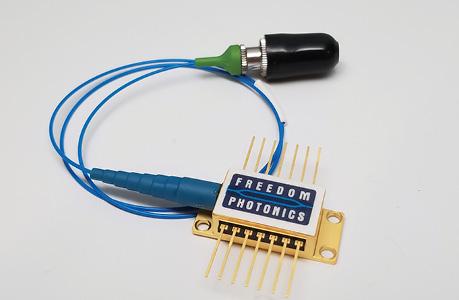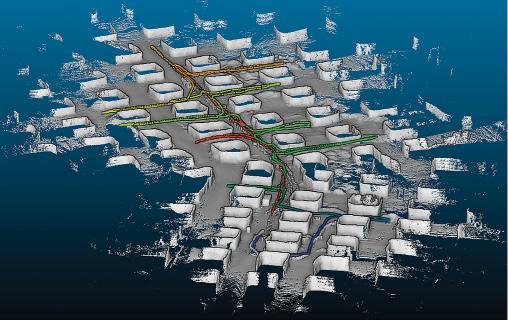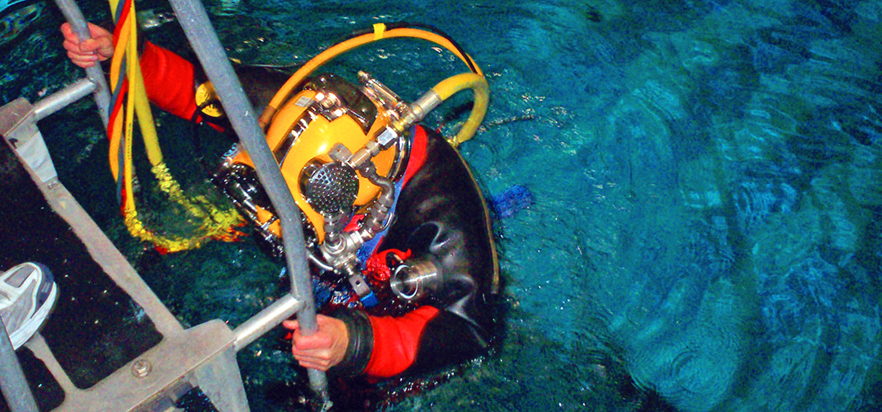
Space Suit Technologies Protect Deep-Sea Divers
Originating Technology/NASA Contribution
Working on NASA missions allows engineers and scientists to hone their skills. Creating devices for the high-stress rigors of space travel pushes designers to their limits, and the results often far exceed the original concepts. The technologies developed for the extreme environment of space are often applicable here on Earth.
Some of these NASA technologies, for example, have been applied to the breathing apparatuses worn by firefighters, the fire-resistant suits worn by racecar crews, and, most recently, the deep-sea gear worn by U.S. Navy divers.
Partnership
Paragon Space Development Corporation, founded in 1993, is located in Tucson, Arizona. This firm is a woman-owned small business, specializing in aerospace engineering and technology development, and is a major supplier of environmental control and life support system and subsystem designs for the aerospace industry. Paragon has proven itself expert in thermal control for spacecraft in orbit and during reentry, as well as for hypervelocity aircraft.
In recent years, Paragon has worked on several different projects that benefit NASA and the space community. Through a NASA-funded Small Business Innovation Research (SBIR) contract, Paragon utilized its unique thermal analysis and structural design capabilities to develop a new, reduced-weight radiator system for use on the Orion Crew Exploration Vehicle, other next-generation spacecraft, and commercial vehicles.
Paragon credits the Arizona Department of Commerce and the Governor’s FAST grant award (Federal and State Technology Partnership program) for the seed funds that led to the NASA SBIR award. The FAST grant program is funded by the U.S. Small Business Administration and is focused on capturing Federal grants for competitive small businesses in each state, creating new jobs and new markets that lead to a better and stronger economy by keeping high-technology jobs in America. Paragon used its $5,000 FAST grant award to write its initial proposal to NASA, a partnership that led to continued research grants and development opportunities.
Other developments resulting from NASA research include Paragon’s Environmental Control and Life Support Human-rating Facility, which the company designed to test emerging life support system designs for suborbital and orbital spacecraft, and the solid oxide electrolysis (SOE) technology, which is under continued development as a Phase II NASA SBIR. The SOE technology directly breaks down the carbon dioxide given off by the crew of a space vehicle and produces oxygen. This is the only known technology with the potential to supply all the crew’s oxygen needs directly from the crew’s metabolic byproducts, significantly saving spacecraft logistical mass. Another NASA project resulted in the development of the metabolic heat temperature swing absorption, which incorporates the technology innovation of using the metabolic heat generated by a space-suited astronaut to absorb and purge carbon dioxide from the breathing loop.
“[Our] partnership with NASA is growing rapidly and has many facets, from spinoffs that protect and enable the war fighter in extreme environments, to technologies that will be used on the Orion spacecraft, and support astronauts on the Moon and Mars,” explained Taber MacCallum, CEO and chairman of the board for Paragon. “NASA is the premier technology organization, and partnering with NASA is a key part of Paragon’s business plan. In our experience, what you put into the partnership determines what you get out of it. Industry’s partnership with NASA is a central component in maintaining America’s technical preeminence and high- technology jobs.”
Similarly, NASA is likely to rely on such commercial space services during the interval between the retirement of the space shuttle and the initial flight of Orion and its Ares launch vehicle.
Product Outcome
Navy divers are called on to work in extreme and dangerous conditions. The high pressure of deep diving, toxic chemical spills, hot waters of the Persian Gulf, and chemical warfare agents make for some of the most hazardous working environments on Earth. As such, the Navy requested a diving system that will not fail when exposed to chemicals and would create an impermeable protective shell around the diver. Paragon’s extensive experience providing life support in extreme environments assisted in the development of a line of such products to protect Navy divers against hazardous materials; in particular, the successful design of a diving suit that now has the potential for use in commercial diving.
In designing the suit, Paragon applied its understanding of air flow in a space suit helmet, use of an umbilical to support an astronaut during a spacewalk, cooling undergarment systems to remove excess body heat, computer codes for thermal and airflow analysis, and materials that have been developed for the aerospace industry that are resistant to extreme chemical and temperature environments.
According to MacCallum, the Paragon suit provides “space suit-like” isolation, delivering safe breathing air to the diver. The surface-supplied system collects exhaled air and returns it to the surface to eliminate ingress pathways of hazardous agents through the regulator. The materials, including all soft goods, are impermeable. The development unit has completed unmanned testing, and the human-rated prototype has completed manned testing, having been evaluated by Navy divers at the Navy Experimental Diving Unit facility in Pensacola, Florida.
“The contaminated water diving technology that Paragon developed for the Navy came about as a result of our partnership with NASA. We are able to protect the war fighter and enable missions in extreme pressure, temperature, and chemical environments because NASA paved the way with space suit technologies and the operational know-how that allows astronauts to work in the extreme environment of space.”
More recently, Paragon provided the Navy with a prototype of its Regulated Surface Exhaust Diving System. The Navy has since requested five units for field testing prior to outfitting all Navy dive suits with the Paragon product. Other products under development at Paragon include individual or collective protection systems designed for use in land vehicles and structures.
MacCallum says, “Bringing space technology back to Earth, we provide space suit-like protection for divers working in hazardous environments ranging from chemical and biological warfare agents, to the toxic environment of a shipwreck or chemical spill. Conversely, our technology is now being considered as a way to protect municipal water supplies from being contaminated by divers servicing potable water tanks.”
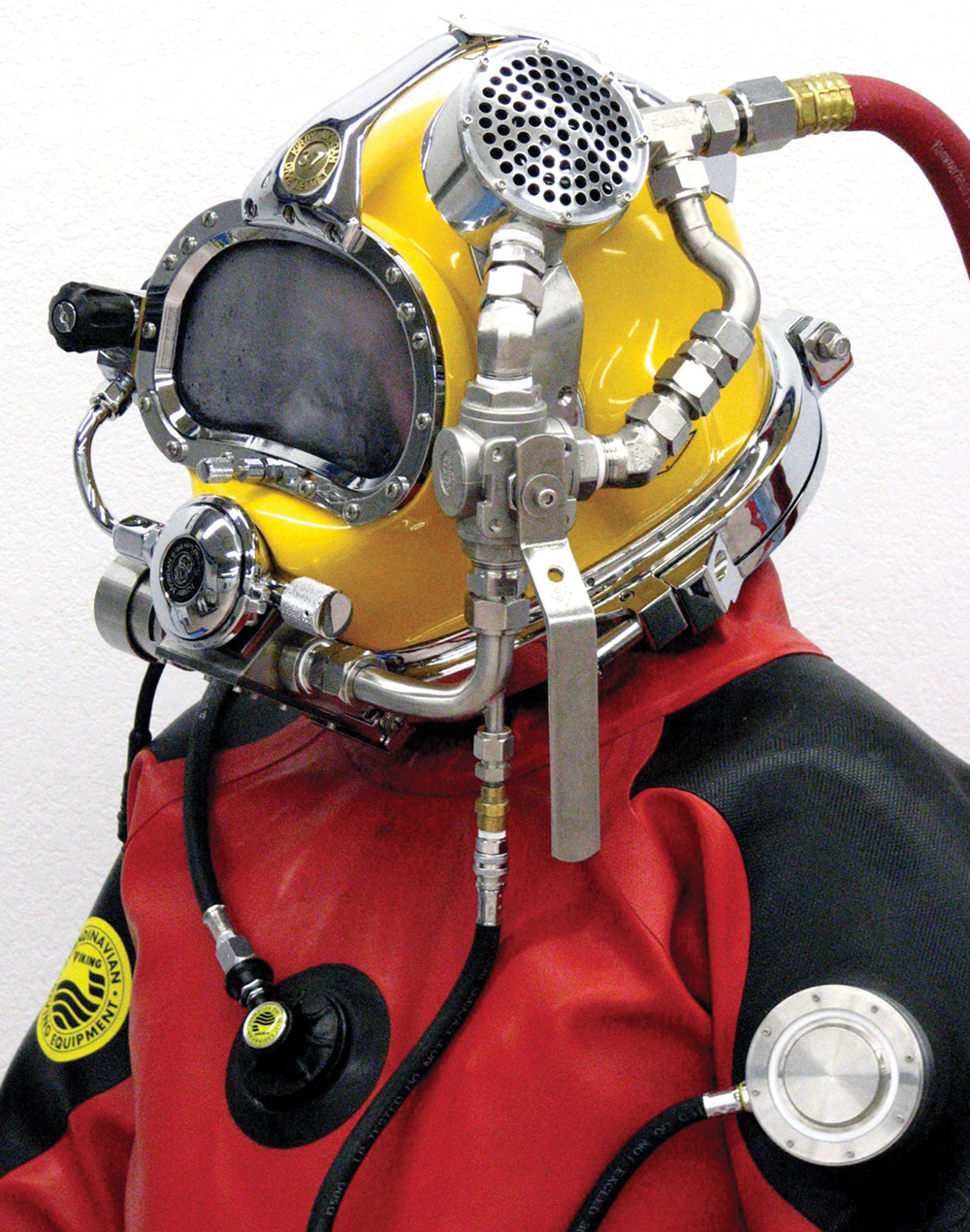
The specially designed suits provide deep-sea divers with space suit-like protection.
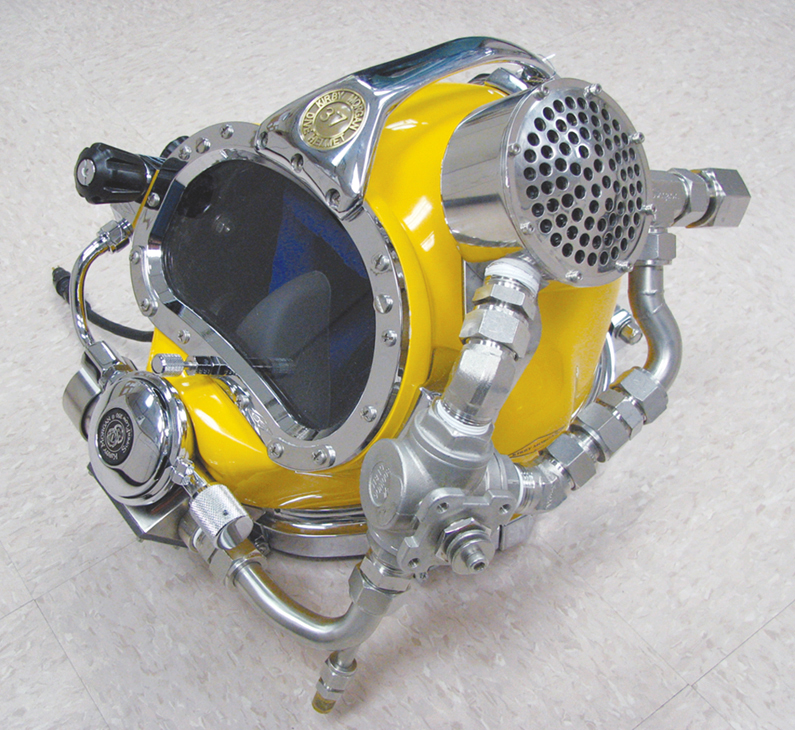
Paragon Space Development Corporation used its NASA know-how to create diving suits capable of protecting deep-sea divers from hazardous environments.

In addition to the obvious dangers inherent in deep-sea diving, divers often encounter hazardous environments, such as waters contaminated by oil and chemical spills, pathogenic microbes, extreme temperatures, and possibly even biological or chemical warfare agents.












